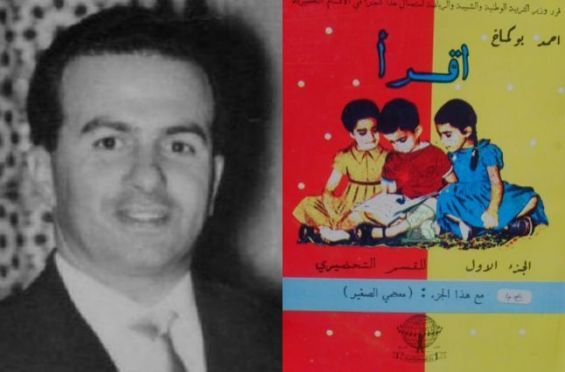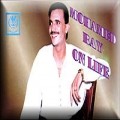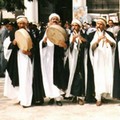For Moroccans who attended public school, he was the man behind their colorful textbooks, a teacher that they nostalgically mention nowadays. He is Ahmed Boukmakh, a Tangier-native who dedicated his professional career to his students.
His name has been associated with the recent the decision taken by the Ministry of Education, amending textbooks in the Kingdom.
Born in the 20s, amid the Rif war, Boukmakh was known in Morocco for creating a series he entitled «Iqrae» (read) to revive the Arabic language after the country broke free from the French. But before having the idea of contributing to the educational sector in the Kingdom, Ahmed Boukmakh was an ordinary kid, who left home to stay at his father’s shop in the city.
 Ahmed Boukmakh with his two daughters./Ph. DR
Ahmed Boukmakh with his two daughters./Ph. DR
A passion for books and teaching
Speaking to 2M TV channel in April 2004, his sister Rachida Boukmakh recalls that he was fond of books. «He was a book worm, who had an affection for reading and my father helped him make it grow», said the sister.
Ahmed Boukmakh and his father spent their time in koranic schools, which pushed him join one of the city’s most ancient schools known as «Jamaa Kebir». After studying there for years, Boukmakh became a teacher and his passion for teaching grew as he got interested in politics.

According to Hespress, Ahmed Boukmakh joined the «Democratic Independence Party» commonly known as «Choura» when he was 18 years old. In his father’s shop, the man used to meet his fellow activists and politicians who gathered to fight against colonization.
A Moroccan textbook
«After Morocco gained independence, he had the idea of creating a Moroccan textbook that would help students understand the Arabic language», said Rachida Boukmakh.
The young teacher thought of developing a 100% Moroccan textbook at the moment when the Kingdom was sourcing them from middle eastern countries like Egypt and Lebanon.
In 1990, he told a newspaper called «Alkhadraa» that the first edition of «Iqrae» was released in the 50s. Indeed, with the help of famous and influential Moroccan essayist Abdellah Guennoun, Ahmed Boukmakh wrote his first series, which was targeting 1st grade students.

The rest of the series covered also elementary schools’ grades, including the 3rd, 4th and 5th. While writing texts for his series, Boukmakh was inspired by Spanish, English, French and even Chinese stories and literary works.
And to make his short stories enjoyable for the kids he relied on Moroccan painter Mohammed Chabaa and cartoonist Ahmed Chentouf. The two artists drew sketches to illustrate the textbooks and make them more entertaining for the students.
Ahmed Boukmakh’s textbooks gained more notoriety throughout the years and after they were designed exclusively for his students in Tangier, they became present in all Moroccan schools for years.

In 1956, 1957 and 1958 Boukmakh created a series of his «Iqrae» textbooks for middle school and high school students, focusing on language, Islamic studies and mathematics. He was asked by the Ministry of Social Affairs to work on a textbook, targeting illiterate people in the Kingdom.
In the 1980s, Morocco decided to replace Boukmakh’s textbooks with new ones. 13 years later, the devoted teacher passed away in Tangier, leaving behind a heritage that marked many generations.





 chargement...
chargement...













